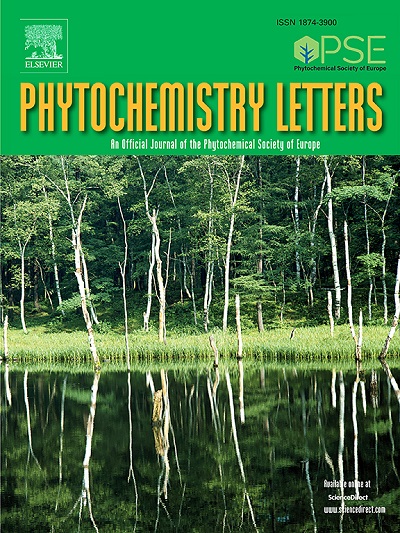Multi-target directed ligands design of 1-O-Acetylbritannilactone derivatives: Dual anti-neuroinflammatory and acetylcholinesterase inhibitory activities
IF 1.4
4区 生物学
Q4 CHEMISTRY, MEDICINAL
引用次数: 0
Abstract
Alzheimer’s disease, a progressive neurodegenerative disorder of the central nervous system, presents a complex pathological mechanism that limits the efficacy of conventional single-target drugs. Utilizing the unique advantages of natural products in multi-target intervention, this study employed the active component 1-O-acetylbritannilactone (ABL) from Inula britannica L. as the parent structure. Guided by the multi-target directed ligands (MTDLs) strategy, four novel derivatives (ABL-1 to ABL-4) were successfully designed and synthesized by introducing acetylcholinesterase (AChE) inhibitory pharmacophores into the ABL scaffold. In vitro pharmacological evaluation demonstrated that ABL-2, ABL-3, and ABL-4 not only preserved the anti-neuroinflammatory activity of the parent compound but also endowed compound ABL with AChE inhibitory potency. Notably, ABL-4 displayed the most promising dual efficacy profile, achieving an AChE inhibition rate of 40.09 ± 0.73 % at 30 μM and an anti-neuroinflammatory activity (EC50 = 8.43 ± 0.5 μM). Molecular docking simulations revealed that the dual-target synergistic mechanism of ABL derivatives arises from hydrogen bonding and π-π stacking interactions with key residues of both AChE and inducible nitric oxide synthase (iNOS). This work not only validates the feasibility of the MTDLs strategy in optimizing natural product scaffolds but also provides a structurally novel lead compound with significant potential for developing multi-target anti-AD therapeutics.
1- o -乙酰苯内酯衍生物的多靶点定向配体设计:双重抗神经炎和乙酰胆碱酯酶抑制活性
阿尔茨海默病是一种中枢神经系统进行性神经退行性疾病,其复杂的病理机制限制了传统单靶点药物的疗效。利用天然产物在多靶点干预中的独特优势,本研究以英ula britannica L.的活性成分1-O-acetylbritannilactone (ABL)为亲本结构。在多靶点定向配体(mtdl)策略的指导下,通过在ABL支架中引入乙酰胆碱酯酶(AChE)抑制药物载体,成功设计并合成了4种新型ABL-1 ~ ABL-4衍生物。体外药理评价表明,ABL-2、ABL-3和ABL-4不仅保留了母体化合物的抗神经炎活性,而且赋予了化合物ABL抑制AChE的效力。值得注意的是,ABL-4显示出最有希望的双重功效,在30 μM下,AChE抑制率为40.09 ± 0.73 %,抗神经炎症活性为8.43 ± 0.5 μM。分子对接模拟表明,ABL衍生物的双靶标协同机制是通过与AChE和诱导型一氧化氮合酶(iNOS)关键残基的氢键和π-π堆叠相互作用产生的。这项工作不仅验证了mtdl策略在优化天然产物支架方面的可行性,而且为开发多靶点抗阿尔茨海默病治疗药物提供了一种结构新颖的先导化合物。
本文章由计算机程序翻译,如有差异,请以英文原文为准。
求助全文
约1分钟内获得全文
求助全文
来源期刊

Phytochemistry Letters
生物-生化与分子生物学
CiteScore
3.00
自引率
11.80%
发文量
190
审稿时长
34 days
期刊介绍:
Phytochemistry Letters invites rapid communications on all aspects of natural product research including:
• Structural elucidation of natural products
• Analytical evaluation of herbal medicines
• Clinical efficacy, safety and pharmacovigilance of herbal medicines
• Natural product biosynthesis
• Natural product synthesis and chemical modification
• Natural product metabolism
• Chemical ecology
• Biotechnology
• Bioassay-guided isolation
• Pharmacognosy
• Pharmacology of natural products
• Metabolomics
• Ethnobotany and traditional usage
• Genetics of natural products
Manuscripts that detail the isolation of just one new compound are not substantial enough to be sent out of review and are out of scope. Furthermore, where pharmacology has been performed on one new compound to increase the amount of novel data, the pharmacology must be substantial and/or related to the medicinal use of the producing organism.
 求助内容:
求助内容: 应助结果提醒方式:
应助结果提醒方式:


